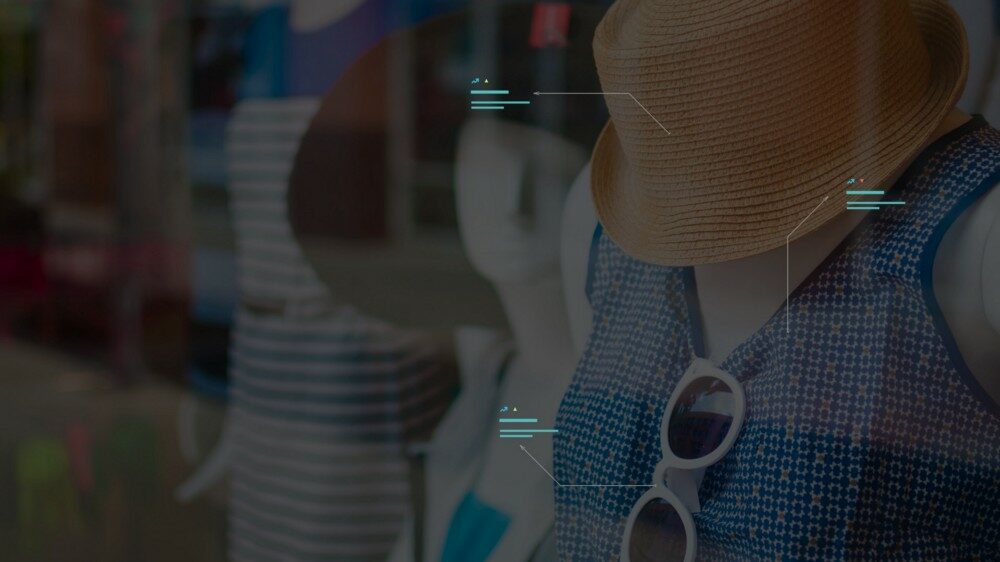Anna is a fashionista and a merchandise manager at a large fast-fashion retailer. As part of her job, she regularly browses through the Web for the most popular designs and trends in contemporary fashion, so she can augment her product assortment with fresh and fast-moving products.
She spots a picture on social media of a fashion blogger sporting a mustard colored, full-sleeved, woolen coat, a yellow sweatshirt, purple polyester leggings, and a pair of pink sneakers with laces. She finds that the picture has garnered several thousand “likes” and several hundred “shares”. She also sees that a few other online fashion influencers have blogged about similar styles in coats and shoes being in vogue.
Anna thinks it’s a good idea to house a selection of similar clothing and accessories for the next few weeks, before the trend dies down.
But, she is in a bit of a pickle.
Different brands represent their catalog differently. Some have only minimalistic text-based product categorization, while others are more detailed. The ones that are detailed don’t categorize products in a way that helps her narrow down her consideration set. Product images, too, lack standardization as each brand has its own visual merchandising norms and practices.
Poring through thousands of products across hundreds of brands, looking for similar products is time-consuming and debilitating for Anna, restricting her ability to spend time on higher-value activities. Luckily, at DataWeave, we’ve come across several merchandise managers facing challenges like hers, and we can help.
AI-powered product attribute tagging in fashion
DataWeave’s AI-powered, purpose-built Fashion Tagger automatically assigns labels to attributes of fashion products at great granularity. For example, on processing the image of the blogger described earlier, our algorithm generated the following output.

Original Image Source: Rockpaperdresses.dk
Vision beyond the obvious
Training machines is hard. While modern computers can “see” as well as any human, the difference lies in their lack of ability to perceive or interpret what they see.
This can be compared to a philistine at a modern art gallery. While he or she could quite easily identify the colors and shapes in the paintings, additional instructions would be needed on how the painting can be interpreted, evaluated, and appreciated.
While machines haven’t gotten that far yet, our image analytics platform is highly advanced, capable of identifying and interpreting complex patterns and attributes in images of clothing and fashion accessories. Our machines recognize various fashion attributes by processing both image- and associated text-based information available for a product.
Here’s how it’s done:
- With a single glance of its surroundings, the human eye can identify and localize each object within its field of view. We train our machines to mimic this capability using neural-network-based object detection and segmentation. As a result, our system is sensitive to varied backgrounds, human poses, skin exposure levels, and more, which are quite common for images in fashion retail.
- The image is then converted to 0s and 1s, and fed into our home-brewed convolutional neural network trained on millions of images with several variations. These images were acquired from diverse sources on the Web, such as user-generated content (UGC), social media, fashion shows, and hundreds of eCommerce websites around the world.
- If present, text-based information associated with images, like product title, metadata, and product descriptions are used to enhance the accuracy of the output and leverage non-visual cues for the product, like the type of fabric. Natural-language processing, normalization and several other text processing techniques are applied here. In these scenarios, the text and image pipelines are merged based on assigned weightages and priorities to generate the final list of product attributes.

The Technology Pipeline
Our Fashion Tagger can process most clothing types in fashion retail, including casual wear, sportswear, footwear, bags, sunglasses and other accessories. The complete catalog of clothing types we support is indicated in the image below.

Product Types Processed and Classified by DataWeave
One product, several solutions
Across the globe, our customers in fast-fashion wield our technology every day to compare their product assortment against their competitors. Our SaaS-based portal provides highly granular product-attribute-wise comparisons and tracking of competitors’ products, enabling our customers to spot assortment gaps of in-demand and trending products, as well as to better capitalize on the strengths in their assortment.

Some other popular use cases include:
- Similar product recommendations: This intelligent product recommendation engine can help retailers identify and recommend to their shoppers, products with similar attributes to the one they’re looking at, which can potentially help drive higher sales. For example, they can recommend alternatives to out-of-stock products, so customers don’t bounce off their website easily.
- Ensemble recommendations: Our proprietary machine-learning based algorithms analyze images on credible fashion blogs and websites to learn the trendiest combinations of products worn by online influencers, helping retailers recommend complementary products and drive more value. Combining this with insights on customer behavior can generate personalized ensemble recommendations. It’s almost like providing a personal stylist for shoppers!
- Diverse styling options: The same outfit can often be worn in several different ways, and shoppers typically like to experiment with unconventional modes of styling. Our technology helps retailers create “lookbooks” that provide real world examples of multiple ways a particular piece of clothing can be worn, adding another layer to the customer’s shopping experience.
- Search by image: Shoppers can search for products similar to ones worn by celebrities and other influencers through an option to “Search by Image”, which is possible due to our technology’s ability to automatically identify product attributes and find similar matches.
- Fast-fashion trend analysis: Retailers can study emerging trends in fashion and host them in their product assortment before anyone else.
The devil is in the details
DataWeave’s Fashion Tagger guarantees very high levels of accuracy. Our unique human-in-the-loop approach combines the power of machine-learning-based algorithms with human intelligence to accurately differentiate between similar product attributes, such as between boat, scoop and round necks in T-shirts.
This system is a closed feedback loop, in which a large amount of ground-truth (manually verified) data is generated by in-house teams, which power the algorithms. In this way, the machine-generated output gets more and more accurate with time, which goes a long way in our ability to swiftly deliver insights at massive scale.
In summary, DataWeave’s Image Analytics platform is driven by: enormous amount of training data + algorithms + infrastructure + humans-in-loop.
If you’re intrigued by DataWeave’s technology and wish to know more about how we help fashion retailers compete more effectively, check us out on our website!
Thank you for Subscribing - Team DataWeave
Book a Demo
Login
For accounts configured with Google ID, use Google login on top. For accounts using SSO Services, use the button marked "Single Sign-on".

